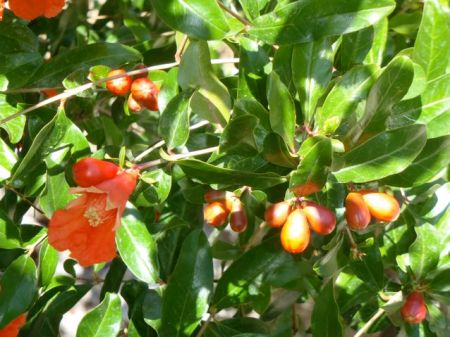The builders have gone, the garden still looks mildly chaotic, summer is here with a vengeance and the yuccas are in flower. Such is life here at Aradippou Tales.
Who knew that yuccas produced beautiful creamy-white flowers each year? Well, perhaps lots of people did but we certainly didn’t until we moved here. Perhaps they only flower under certain conditions? We were out and about a week or so ago and spotted a yucca in flower: it was only when we got home and investigated that we discovered ours was too. In our defence the tree is twenty feet tall and the only way to see the top is to climb up the outside stairs.
At some point later this year the yucca will need some care and maintenance, the removal of old leaves if nothing else. It is not an easy job: twenty feet of tree, razor sharp leaves and a fair amount of catching up due to the previous owner’s belief that pruning or cutting back a plant breaks its spirit.
In the meantime we’re enjoying the sight of the gorgeous flowers.

Yuccas, from below

Yuccas in flower
Elsewhere one of our mystery plants appears to be suffering in the heat. This plant grows and grows and grows during the spring putting on nearly five feet of growth in as many weeks. Come the summer heat it begins to collapse back on itself but at the same time produces a dozen or more flower stalks.
MadAlex said it was a lily of some sort; we are not so sure. It may be a white agapanthus but we’re really not sure. For one thing it is significantly bigger than they normally grow, that could just be the Cyprus effect though.

Mystery plant

Flower stalks
Elsewhere the fig tree growing behind the house is covered in fruit. So far they are only small but once more there are hundreds of them. Also in a growth spurt is the garden bougainvillea: it is absolutely covered in coloured bracts.

Fresh figs

Obligatory bougainvillea photo
And finally this month a tiny piece of thievery. When the empty plot next to us was cleared a half pithari was uncovered. Pithari are common sights here in Cyprus; we have already have two in the garden, one containing the bougainvillea and the other our recently planted lavender. But there’s always room for another, they make such fantastic planters even when they are broken or in two parts.
This newly revealed pithari remained in the cleared plot for week after week with Mands lusting after it. Because the entire village is built on a slope houses are often set at different levels. Despite being the next plot over the ground is actually 10 feet below us so getting the pot out would mean climbing down the drop and lifting the heavy pot out or carrying it on a 10 minute trek through the village.
Perhaps not the best plan when, technically, the pot wasn’t ours. So the pithari remained where it was.
After the builders were finished onsite the scaffolders came back to take down the scaffolding. After plying them with mugs of strong tea and freshly baked lemon cake Mands cheekily asked them if they’d be able to help with a tiny job. Pointing out the pithari she explained that it didn’t actually belong to us but that no one else, including the owner, seemed to want it. The scaffolding boys caught on very quickly: it’d be a shame for it to go to waste they said. Perhaps if they re-homed it into our secret garden we could make use of it?
Half an hour later they’d man-handled it up from the lower plot and positioned it against a couple of walls. It’s now sitting there waiting while we decide what to plant it with … and while we see if the rightful owner comes to reclaim it.

The acquired pithari










































